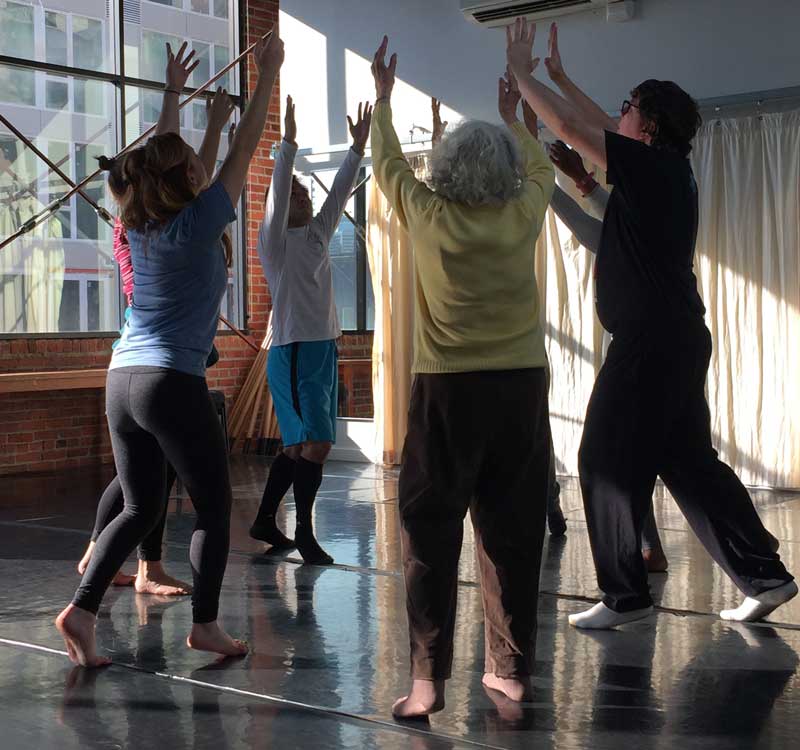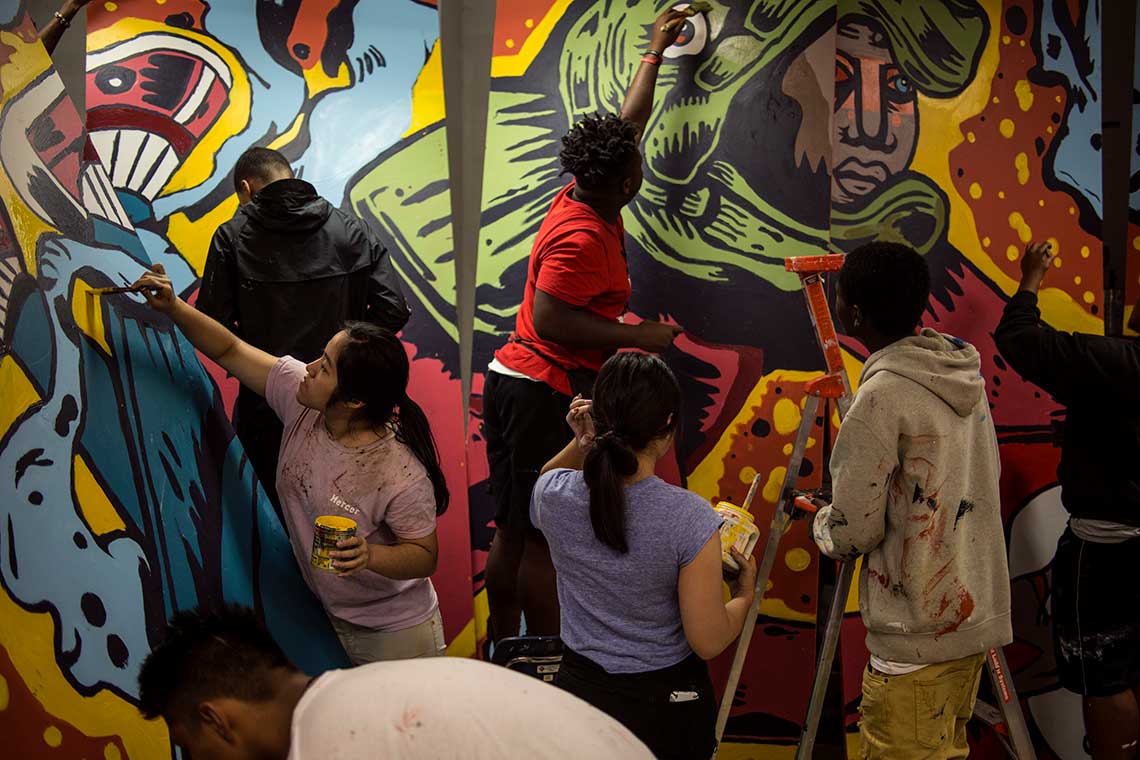We are in a pivotal moment. We are emerging from three years of pandemic-related impacts, many of the major employers of the region have announced layoffs, and everybody is feeling the impact of inflation on their wallets. At the same time, art persists.
Audiences are returning to theatres and gallery spaces, artists continue to explore topical themes and challenging narratives, and the cultural sector works to understand what it looks like to move our craft forward in 2023. More than ever before, ArtsFund believes that art and cultural practice must play a major role in how our cities and communities recover. The arts are a tool for building a better quality of life and a strong arts sector is a sign of a healthy community. As we strategize around how to shape healthy communities, support young people, and neighborhood recovery, we believe that the arts can help frame these conversations in ways that center the most impacted individuals and boost overall outcomes.
At the core of ArtsFund’s mission is the belief that arts strengthen community. With this in mind, we are revisiting the findings of ArtsFund’s last Cultural Impact Study*, and the three focus areas of Youth Development and Education, Health and Wellness, and Neighborhood Vitality. For specific study citations, please visit the complete report at www.artsfund.org.
Youth Development and Education
Involvement in arts can improve academic and social outcomes for youth across socioeconomic status. Research shows that through arts education, youth learn critical thinking skills and build technical capacity to express themselves and engage with the world around them. Students with arts backgrounds are also more likely to access economic mobility via employment in high-demand creative class fields. This suggests that to cultivate a creative workforce and supply a knowledge economy, business leaders and elected officials should support and promote arts education and access to the arts, especially in the K-12 years.
Additionally, arts education may play a key role in the development of local talent and a 21st century workforce. Arts education can help supply local talent to fill the workforce pipeline and serves as a ‘field-leveling’ intervention. While research suggests all students benefit from arts education, studies show that its effect on academic achievement is strongest for lowest-income students. Integrating art especially benefits low-income students, demonstrating out-size gains in English and math scores, behavioral challenges, college attendance, voting, and volunteering in their community. For example, 43% of eighth graders of low socio-economic status and low arts engagement plan to earn a bachelor’s degree. This number is thirty points higher (73%) for students with similar backgrounds who also have arts engagement. This evidence suggests art is a useful tool to advance equity goals.

Health and Wellness
Studies show that the arts impact health and wellness, particularly in aging adults and people diagnosed with Alzheimer’s or other disorders that cause dementia and recovering patients. The presence of arts and opportunities for arts engagement also contribute to community-level health and wellness.
In both primary care and behavioral health, music and art therapy are widely recognized strategies to reduce stress and anxiety, as well as cope with symptoms of disease. Nationwide, 45% of medical institutions offer some sort of arts program. Of those 80% stated a main reason for having arts in healthcare is to benefit patient recovery, and locally, many hospitals and health providers integrate arts into their resources. In King County, more than 600 patients participate in the Swedish Cancer Institute Art Therapy program every year, with many more patients requesting access to the program. Kaiser Permanente Washington collaborates with Seattle Children’s Theatre to promote community health through plays and workshops that address health topics from HIV to healthy eating to bullying.
Medical schools and hospitals, including Virginia Mason Medical Center, integrate art in curricula and partner with local museums like Seattle Art Museum to help physicians build skills in empathy and observation.
Older adults with high and sustained levels of involvement with participatory art forms like music and dance experience positive cognitive and quality of life outcomes including self-motivation, mental stimulation, and productivity, along with the intrinsic pleasure of participation. In addition, older adults involved in the arts have fewer visits to the doctor, require less medication, and experience less depression than older adults not involved in participatory arts programming.
Neighborhood Vitality
The presence of arts in a community is linked to increased neighborhood livability, community identity, and social wellbeing. Research ties the benefits of arts and cultural participation to a sense of pride and community ownership. While many aspects of wellbeing are linked most closely to economic status and racial identity, in neighborhoods with limited economic resources, engagement with arts and culture can create social capital (the value and resources inherent in social relationships and networks) that exerts a strong, positive effect on wellbeing.
This evidence suggests arts and cultural assets can play an important role in equitable outcomes. There are many examples of “creative placemaking,”—the process by which arts-based interventions animate under-used, vacant, or utilitarian parts of neighborhoods, increasing the appeal of a place and catalyzing community revitalization and economic development. It is worth noting that in some cases, creative placemaking can have unintended consequences such as gentrification, when the growing appeal of a place increases rents and costs for housing and small businesses.
In addition to creating new places, art may be utilized for “place-keeping” or the ongoing upkeep of existing cultures or populations within a geographic boundary. Artistic and cultural resources, such as public art, can increase the appeal of existing public spaces and support place-keeping. In addition to the maintenance of the physical environment, arts can foster community partnerships, and connections between residents. Place-keeping can be especially valuable in neighborhoods that have been historically underinvested in, thereby addressing historic and structural inequities.
People intrinsically value the arts in their lives—arts entertain, inspire, inform, and provoke us. If Washington is to meet our most pressing challenges, we will need to find a way to leverage and expand the powerful impacts of the arts so more people and communities can benefit. Arts are not the only strategy to affect positive social outcomes, but they are a viable and proven—yet often underutilized and unacknowledged—strategy.
What can you do?
Research demonstrates that the arts are a powerful partner for positively influencing the social determinants of health and well-being at both the individual and community level. And the time is ripe for cross-disciplinary approaches to addressing some of our most pressing challenges. In order to continue to support a strong quality of life for Washingtonians, the state’s arts organizations need all of us.
How can you be part of this movement? You are doing it right now. By showing up for arts programming and bringing your friends and family to experience what our artists and cultural organizations are offering, you are investing in their ability to continue to offer these benefits and strengthen our community fabric.
Invest in arts organizations that matter to you through direct funding. In addition to direct funding, investments can be in the form of time, space, professional services, board leadership, and marketing support.
The arts have always been a reflection of the world around us. We rely on the arts to tell stories that unlock unfamiliar narratives to help us understand one another; to bring people together in shared experiences for a sense of belonging; and to act as a healer and agent of joy. Join us in supporting the creative workers, artists and cultural organizations that help support a healthy and vibrant Washington state.
* The Social Impact Study was first published in 2018 under the leadership of Mari Horita and Sarah Sidman. The report, with primary focus on youth development and education, health and wellness, and neighborhood vitality, analyses the potential for arts to influence more equitable outcomes via a county-wide public poll; a landscape scan of King County arts, cultural, and heritage nonprofits; a substantive review of 150+ national research resources; and case studies of ten regional arts organizations. To read the report in full, please visit www.artsfund.org.
